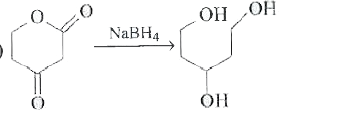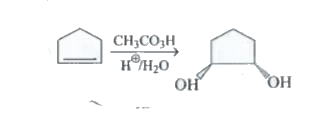A
B
C
D
Text Solution
AI Generated Solution
The correct Answer is:
|
Topper's Solved these Questions
AROMATIC COMPOUNDS AND ALKYL AND ARYL HALIDES
CENGAGE CHEMISTRY ENGLISH|Exercise Exercises Multiple Correct Answers Type|15 VideosView PlaylistAROMATIC COMPOUNDS AND ALKYL AND ARYL HALIDES
CENGAGE CHEMISTRY ENGLISH|Exercise Exercises Single Correct Answer Type|28 VideosView PlaylistAROMATIC COMPOUNDS AND ALKYL AND ARYL HALIDES
CENGAGE CHEMISTRY ENGLISH|Exercise Exercises Linked Compreshension Type|11 VideosView PlaylistAPPENDIX INORGANIC VOLUME 2
CENGAGE CHEMISTRY ENGLISH|Exercise Short Answer Type|179 VideosView PlaylistBIOMOLECULES
CENGAGE CHEMISTRY ENGLISH|Exercise Exercises Archives (Analytical And Descriptive)|8 VideosView Playlist
Similar Questions
Explore conceptually related problems
Knowledge Check
Similar Questions
Explore conceptually related problems
CENGAGE CHEMISTRY ENGLISH-AROMATIC COMPOUNDS AND ALKYL AND ARYL HALIDES -Exercises Multiple Correct
- Consider the following compound: Which of the following staements...
Text Solution
|
Play - Consider the following reactiions: Which of the staements are cor...
03:53
|
Play - Which of the following reactions are both sterospecific and steroselec...
04:12
|
Playing Now - Which of the following reactions(s) is/are both non-sterospecific but ...
02:49
|
Play - Which of the following reactions(s) is/are sterospecific but non-stero...
03:23
|
Play - Which of the following reaction(s) is/are neither sterospecific nor st...
02:28
|
Play - The first steps of SN^(1) and SN^(2) recatiosns are, respectively
01:50
|
Play - Which of the following staements are correct about ElcB reaction ?
04:13
|
Play - In which fo the following reactions is the correct major product forme...
04:19
|
Play - Which of the following syntheses could not be doen without involving b...
03:13
|
Play - Which of the following side chain reaction/s can be used to reduce th...
03:19
|
Play - In the following reactions: Which of the following staements a...
03:13
|
Play - Which are the sources of phenol?
02:35
|
Play - Which contenet (s) of middle oil separate on cooling?
02:06
|
Play - Sulfanillic acid at pH = 2 and 12 exists as....and migrates towards......
02:37
|
Play - Consider the following reactions: I. C(2)H(5) - I + NH(3) rarr C(2) ...
02:50
|
Play - In which of the above reactions does the rate fo SN^(2) reactions dec...
Text Solution
|
Play - Consider the folliwng reactions: I. Me(3)C - Br underset(SN^(1))over...
05:33
|
Play - Which benzene sulphonic acid and p-nitrophenol are treated with NaHCO3...
01:36
|
Play - The decreasing order of pK(a) value of the folliwng is:
05:07
|
Play








